How to use plants to reduce noise pollution – plus 9 of the best varieties for the job
Plants and greenery can block unwanted sound in your yard and balcony, for a more tranquil outdoor space
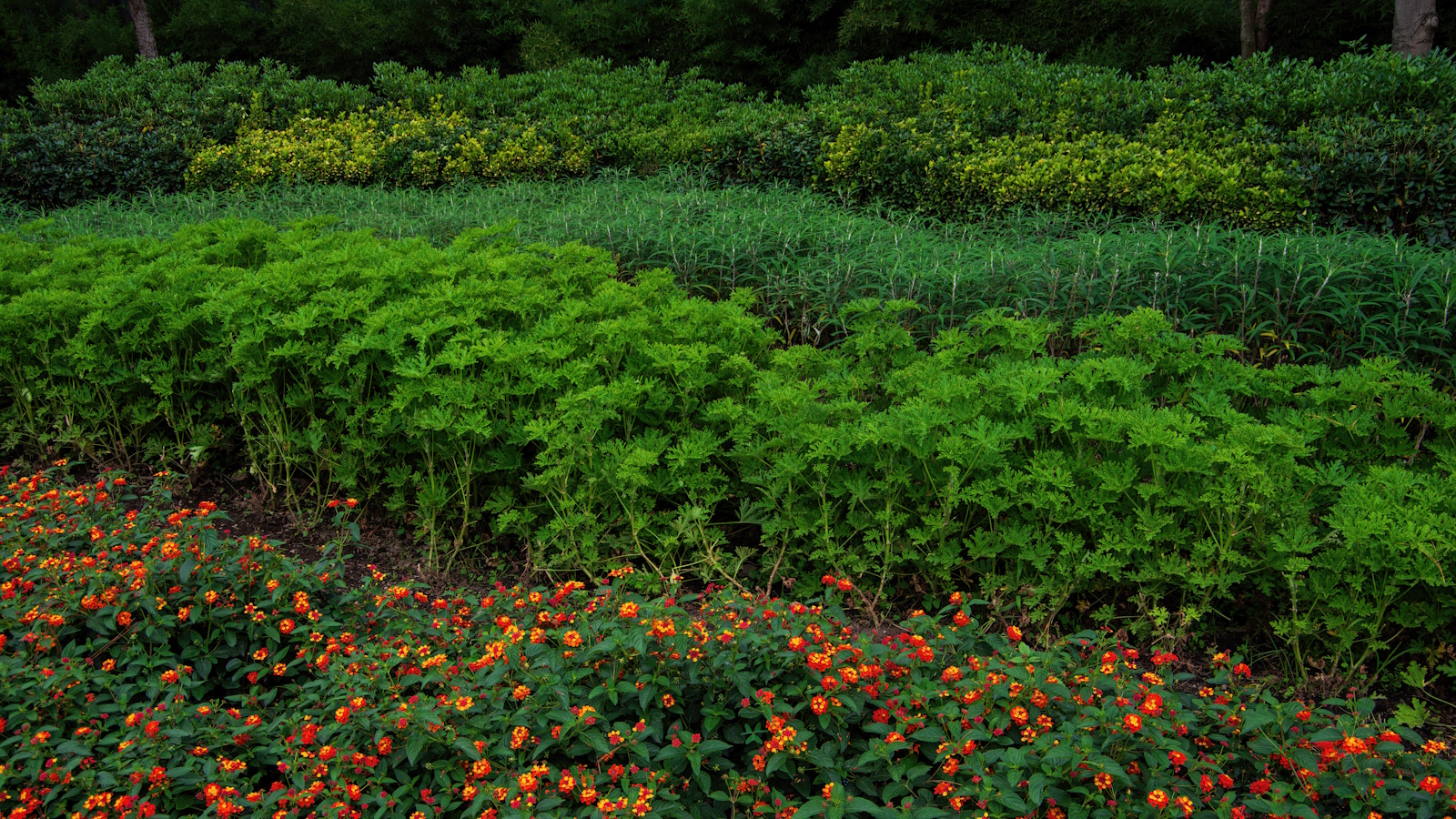

Urban living is full of convenience but also full of noise. Traffic, planes, people, the general hubbub of city life rumbles on 24 hours a day and it can be hard to get away from it - even in the sanctuary of your own backyard or balcony. Many road builders now construct so-called baffles along busy highways to block the worst of the traffic noise, but the background hum is ever present.
Luckily, there are many ways you can help to reduce it further by using plants to create a natural sound barrier. Clever planting not only helps to mask noises from beyond your backyard, it creates an attractive feature in its own right. Generations of gardeners have used trees, shrubs and plants to demarcate their property lines and create privacy, but they can also be used to reduce the impact of unwanted external sounds.
Here we look at many ways of mitigating urban noise using plants, how to create a living sound barrier, and profile nine of the best plants for the job.
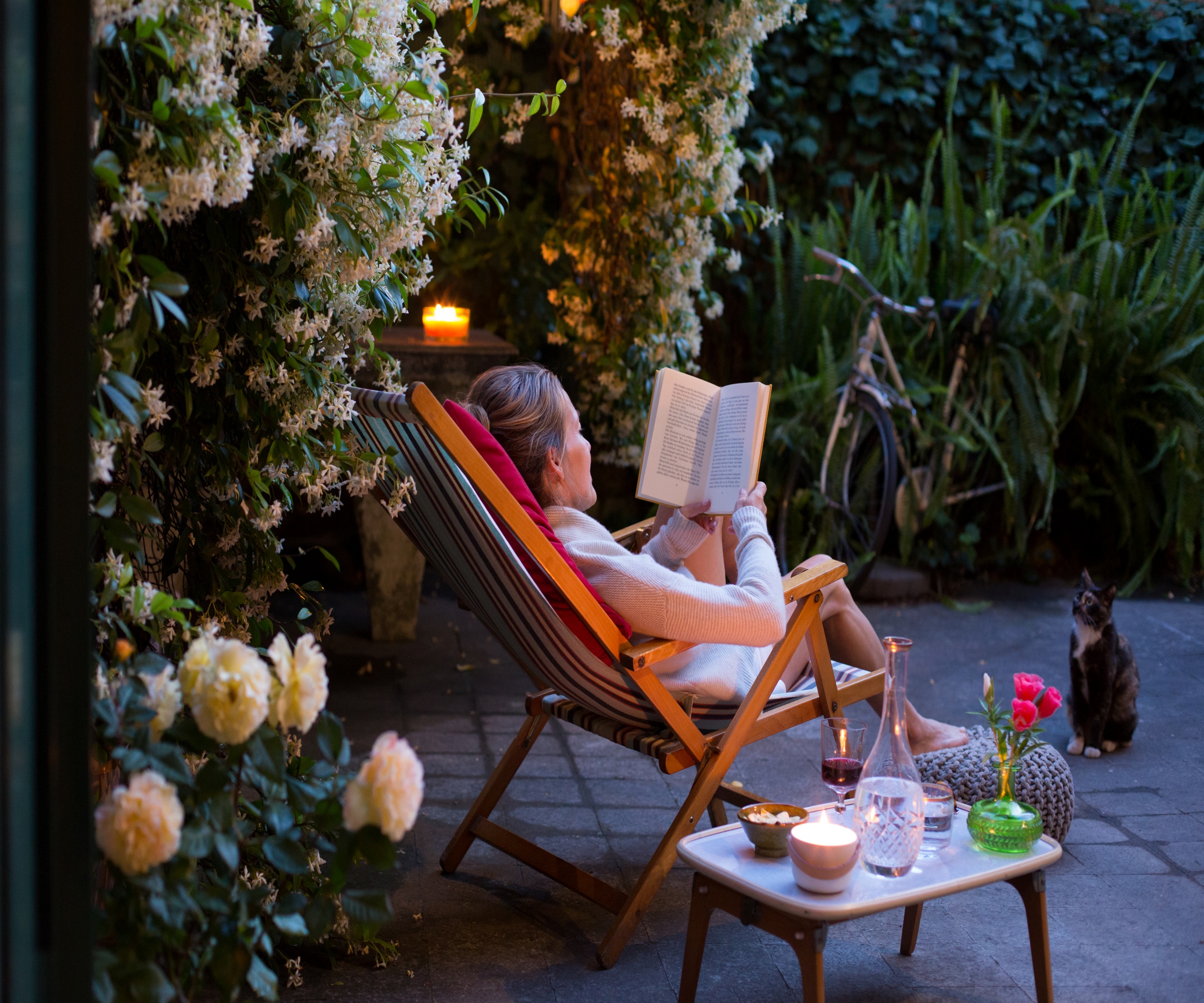
Clever planting can help to turn a garden into a tranquil oasis
The science behind soundproofing with plants
There are several ways that plants in urban yards can help to muffle the sounds of city life. These are:
- Blocking: Plants act as a barrier against sound.
- Absorption: The different parts of the plant, the leaves, stem and branches, all act as baffles to absorb sound.
- Deflection: The physical presence of the plants helps redirect noise by acting as a physical buffer.
- Dissipation: Sound that is carried on the wind is dispersed when it hits a natural barrier of branches and leaves.
- Masking: Plants and trees are never silent, they rustle, creak and sigh as they move and this helps to cover the noise of urban life - as does the song of the garden birds they attract into their branches.
How to create a living sound barrier
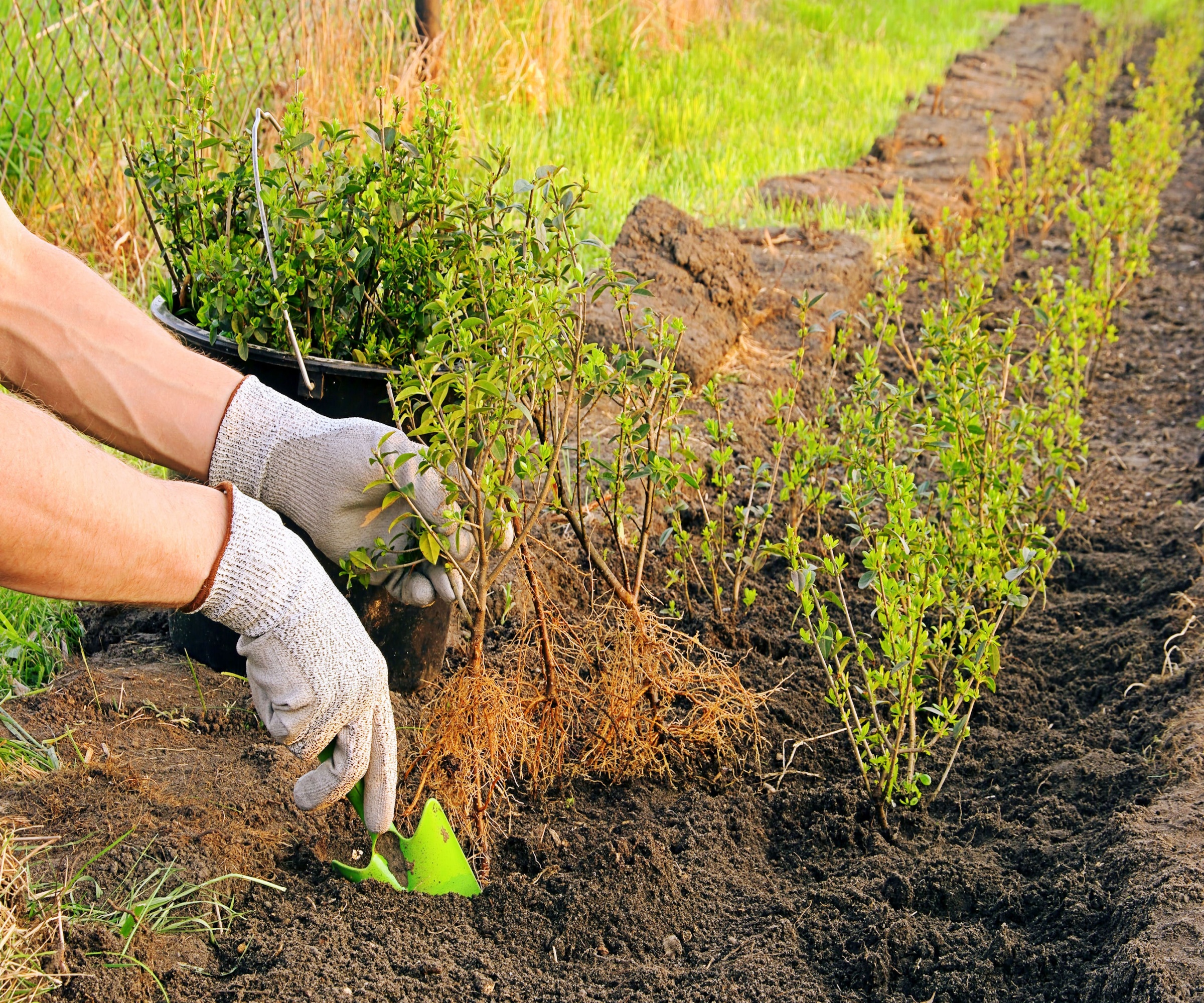
Planting a double row of hedging using fast-growing plants will create noise protection and privacy
For your living sound barrier to grow and thrive you need to give it the right conditions.
Make soil health your priority, by digging in lots of well-rotted manure and compost (also known as organic matter) to enrich it and boost its nutrient load.
You also need to know what type of soil you have, whether it is chalky, acidic (ericaceous) or has a neutral pH so you can choose the appropriate plants. If your soil is poor and sandy, added organic matter will give it more weight, help it hold on to water and ensure that its goodness is less likely to wash away in heavy rain.
Organic matter will also help open up heavy clay soils, making them less prone to waterlogging and letting oxygen get down to the roots of any plants growing there.
You could also create a berm, a raised ridge of solid soil that you can plant your trees and shrubs into. The berm itself will help block ground-level noise.
To create the most effective sound barrier, consider planting a hedge in two or three staggered rows with the tallest varieties at the back, medium-height plants in the middle and ground cover at the front.
This will create a layered wall and the plants will quickly mesh together and make a substantial sound barrier.
Mix evergreens and deciduous varieties so you get protection all year round, and if you live close to a busy highway, you can use scented plants to help mitigate the traffic fumes.
9 of best plants for reducing noise pollution
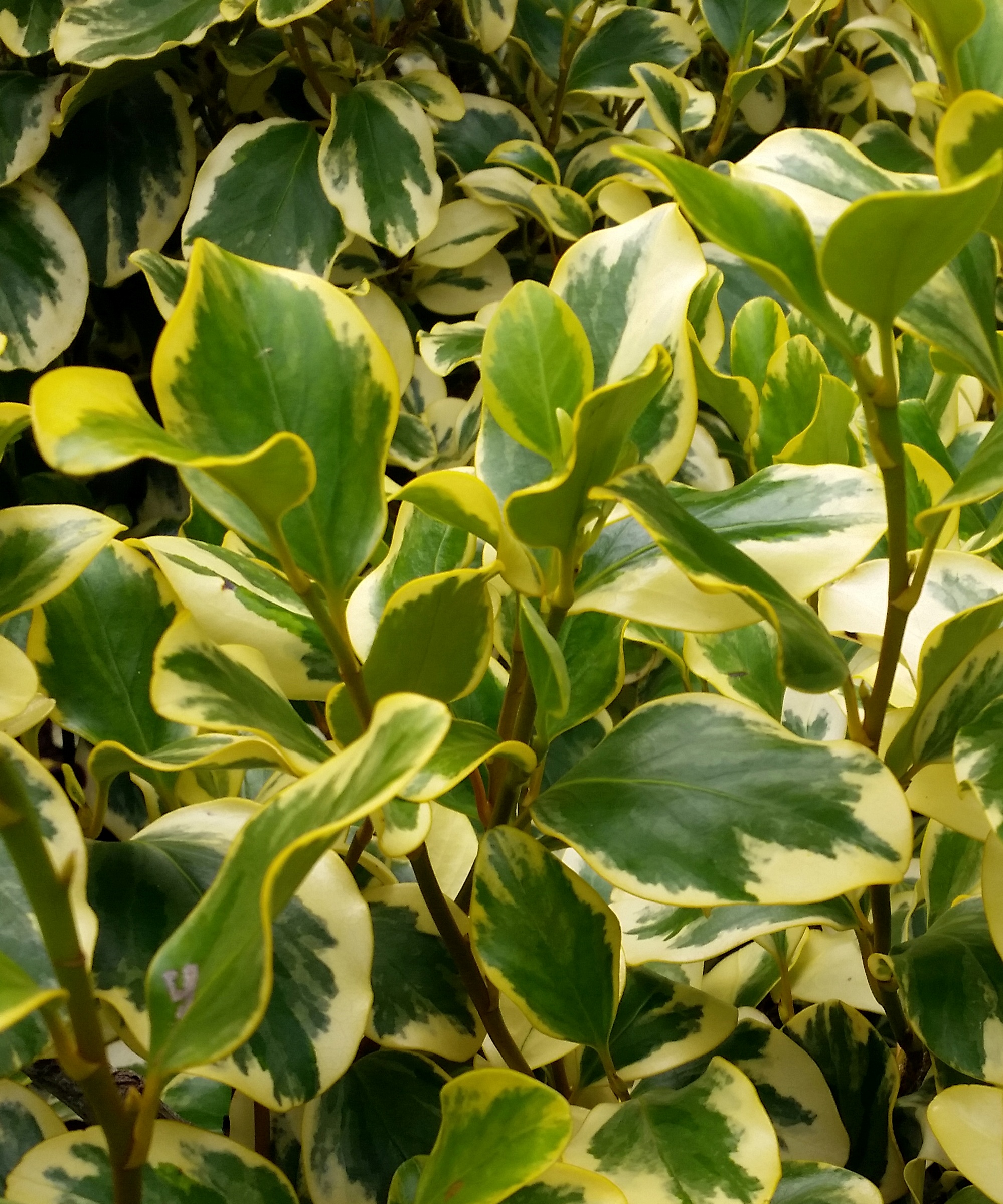
Griselinia littoralis is an attractive, fast-growing evergreen shrub that can be used as a sound barrier
The first thing to consider when choosing plants to protect your backyard against noise is your soil type. Once you know this, you can choose suitable trees, shrubs, grasses and plants that will thrive without too much hard work from you.
Fast-growing trees and speedy shrubs will quickly create privacy and block noise, and evergreens such as Grisellina littoralis, laurel, holly and pittosporum give year-round cover. Thick, dense foliage or small leaves such as pine needles will absorb sound effectively, as does the indentations and patterns of rough bark.
Don't forget perfumed plants to help mask bad smells, too. There are many fragrant hedge plants that will add a heavenly scent to an urban yard.
3 varieties for height

Colorful evergreen rhododendrons create an attractive evergreen hedge
For the back of the border closest to the source of noise you need quick-growing trees that will act as a dense barrier against noise. Some of the best shrubs for privacy are also ideal for dissipating the sounds of an urban environment.
- Bamboo: Bamboo is a great choice because if managed properly it creates a tall barrier without taking up too much room. Choose a fast-growing variety such as the attractive ‘Greenstripe Vivax’, which has green-striped yellow stems, or black-stemmed Gigantochloa atroviolacea (Java Black or Tropical Black Bamboo). Plant them in a pit lined with non-permeable lining, such as this from Amazon, to stop them spreading throughout the yard.
- Rhododendron: A popular evergreen plant with glossy leaves and vivid blooms, rhododendrons like acid soils and semi shade. Choose ‘Scintillation’ which grows to over 6ft, or the dwarf ‘Pleasant White’ for the front of your noise screen.
- Norway spruce: Not only one of the best Christmas tree varieties, this towering beauty makes a quick-growing sound barrier and can put on 3ft a year, eventually growing to 75ft tall. An attractive tree, it produces large cones and is great for bringing birdlife to your yard.
3 varieties for the middle of the border
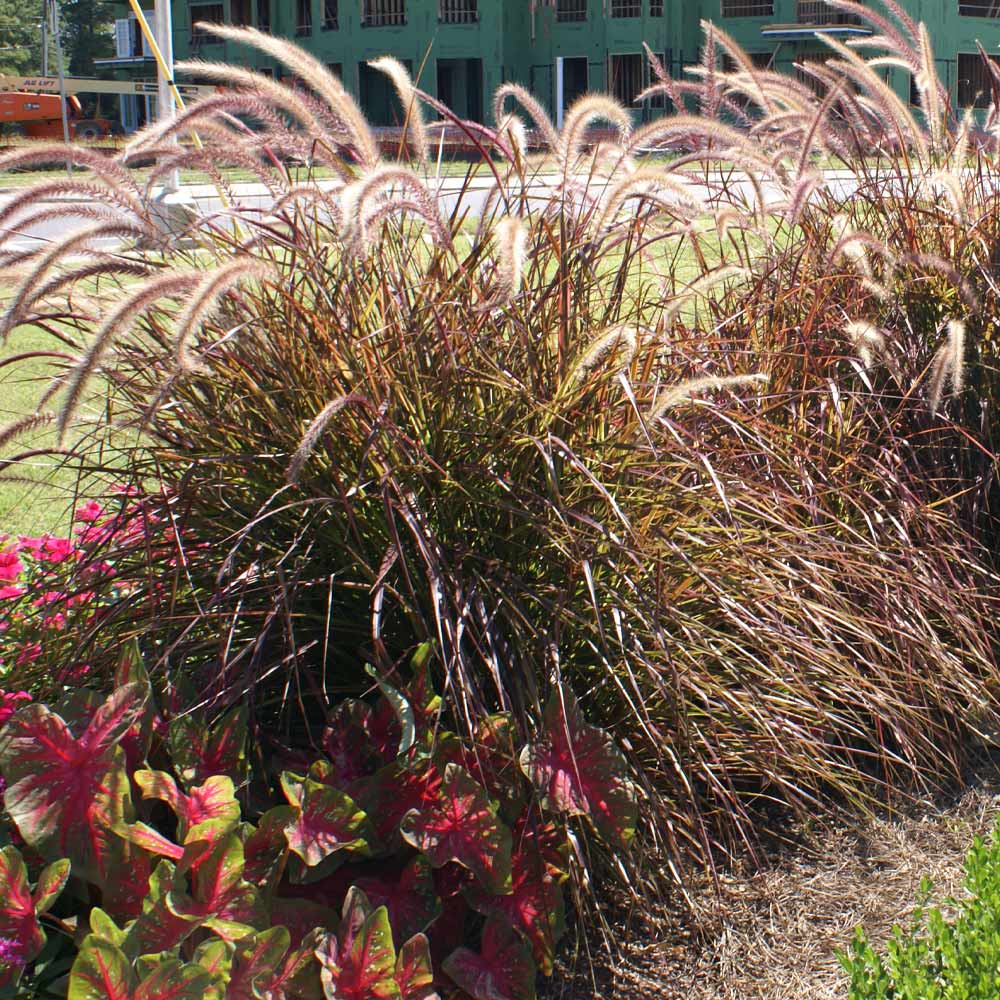
Purple Fountain Grass is a stunning dark-bladed ornamental grass that will sit well in the center of a border
The middle of the border needs eye-catching need color, texture and movement. Break up the lines and increase the interest of the border by planting a variety of plants that work well together. Our suggestions include:
- Holly: An evergreen favourite, holly has glossy, sometimes variegated leaves and will produce bright scarlet berries in the fall and winter if you grow male and female plants together (check before you buy). Popular varieties include Ilex aquifolium 'Argentea Marginata', which is variegated and female, and Ilex aquifolium 'Silver Queen' which has pale fringing on its leaves and is, confusingly, a male plant.
- Azalea: Always popular, these deciduous or evergreen plants are one of the best flowering shrubs and grow to between 3ft and 20ft depending on variety. They produce pretty flowers in pinks, white, purple and red. They like neutral or acidic soil. Varieties include the compact 'Rosy Lights', which is deciduous and cold hardy in zones 3-7, and the fast-growing ‘Golden Oriole’, which produces golden-yellow blooms in spring. You can find azalea starter plants at Walmart.
- Ornamental grass: Ornamental grasses are one of the best forms of garden screening. They can be grown in the middle or front of a noise-blocking border and add delicate airiness to the planting scheme. The rustling sound as wind passes through them also helps mask outside sounds. The densely clumping feather reed grass (Calamagrostis x acutiflora) reaches 5ft, 'Big Bluestem', which teaches 6ft and is an attractive bluish grass, and fountain grass which has funky dark blades and long frothy seedheads. Don't forget that they will need cutting back each year to keep them looking their best, and check before planting as several species are classed as invasive in some states.
3 front border varieties
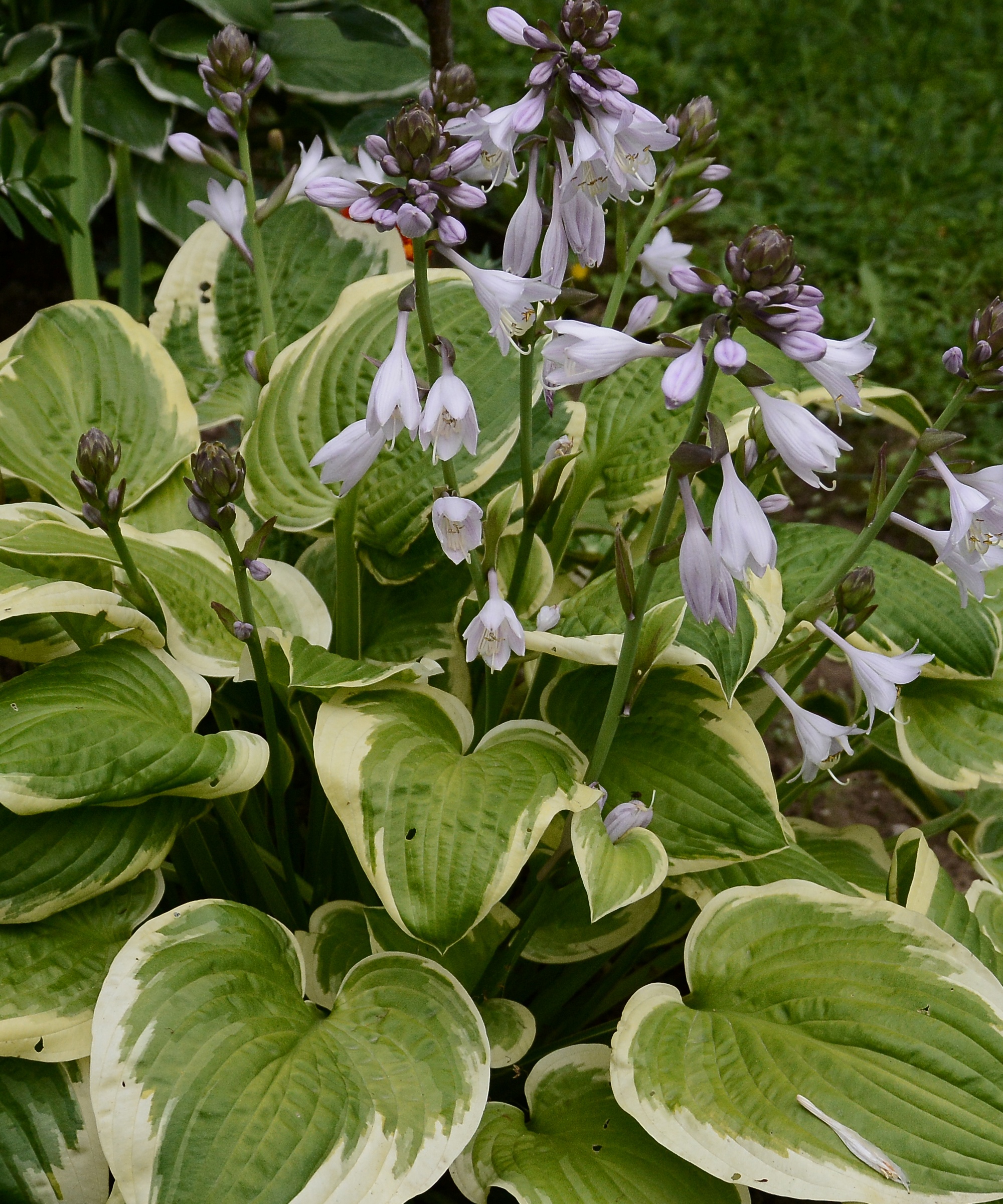
Hosta 'Wolverine' has distinctive leaves and flowers in late summer
The front of the border is for more low-growing varieties and ground cover.
Aromatic herbs such as rosemary and creeping thyme will soften the border edge and also release scent when touched or brushed against. Other varieties worth considering include:
- Hosta: There are almost as many hosta varieties as there are backyards, and once you know how they are relatively easy to grow and care for. Several varieties produce attractive flowers and some are resistant to slugs. ‘Sugar and Cream’ is a sun-tolerant variety with green leaves and scented white flowers, ‘Wolverine’ has blue-green leaves and produces mauve blooms in late summer, and ‘Paradigm’ can grow to 4ft and has golden leaves that become more colorful as the summer progresses.
- Variegated ivy: Variegated ivies make attractive ground cover plants and are easy to pull out if they threaten to become invasive. They are also one of the best plants for reducing air pollution. Try the silver-mottled ‘Glacier’, which grows well in dry shade, and ‘Ivalace’, which has unusual bright green leaves.
- Periwinkle: Vinca Minor is one of the best evergreen ground cover plants. Fast-growing with sweet blue flowers, it can be invasive so be prepared to step in and intervene if it threatens to get out of control.
Trees and shrubs to reduce noise pollution in coastal yards
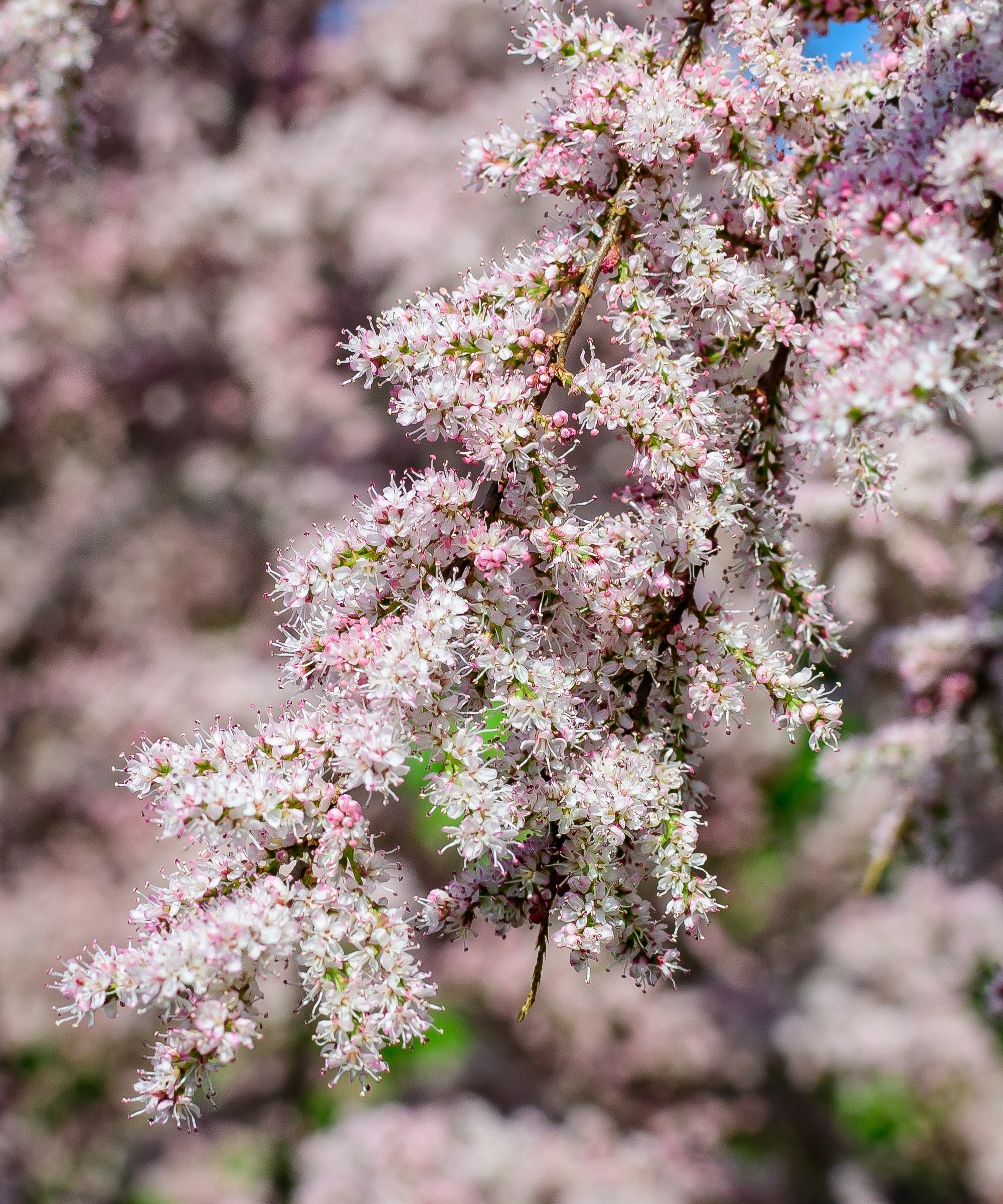
Salt-hardy tamarisk is perfect sound-proofing for coastal gardens
The sound of the sea is one of the joys of a coastal garden, but if the crowds descend during the vacations, then there may be less welcome noises to contend with.
The best coastal garden plants need to be able to withstand strong, salty winds and saline spray, but there are many to choose from to help you create a year-round barrier for your backyard.
Tamarisk is a beautiful tree with delicate racemes of pink flowers in spring and early summer, and other attractive options include Southern red cedar, home oak and hornbeam.
Palms will grow well but are not so good for noise reduction, but you could consider growing Phormium and other architectural plants such as grasses that add shape and texture, will whisper and rustle in the wind to help dilute other unwanted sounds.
Plants to reduce noise on a balcony garden
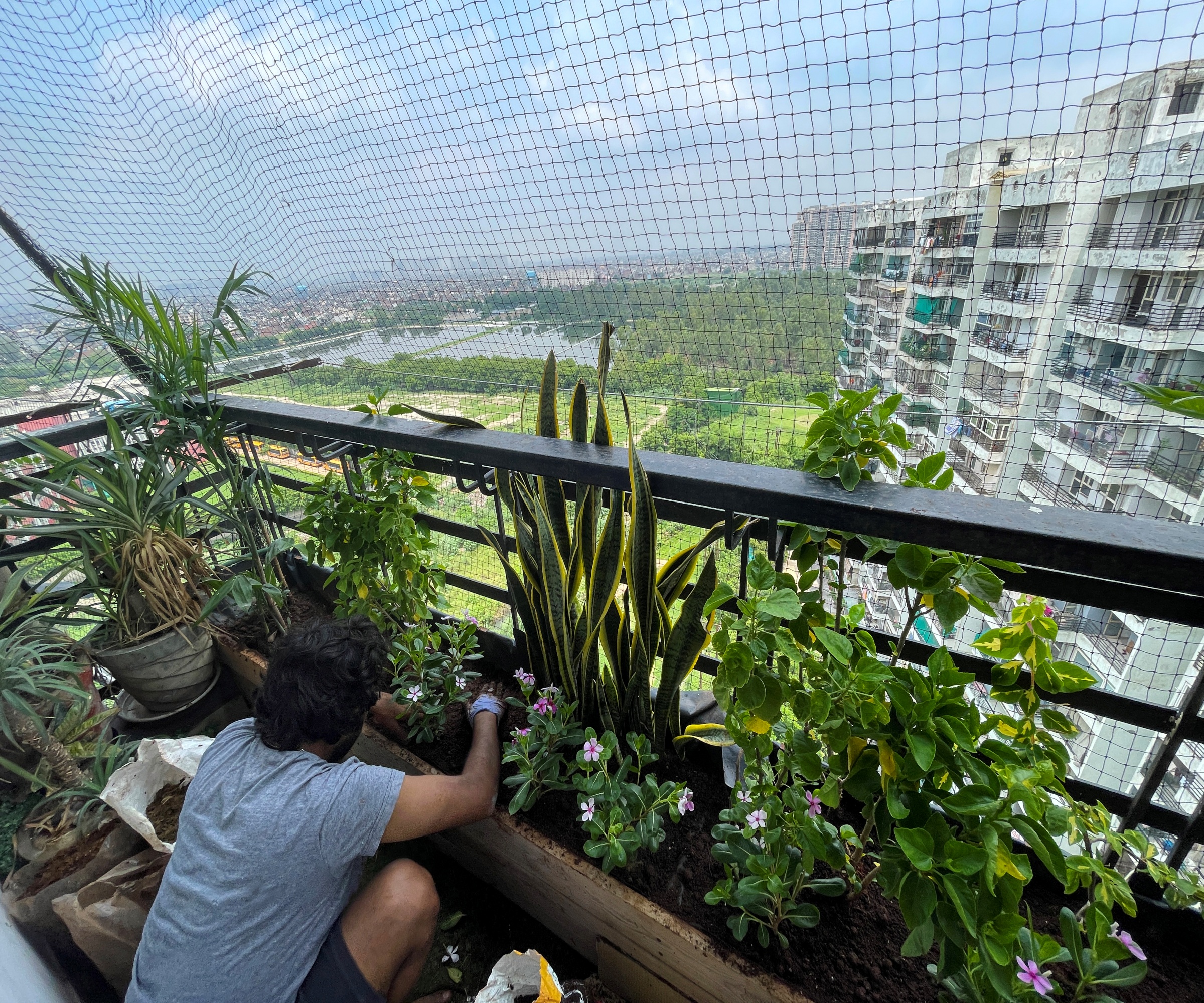
Plants can really help reduce noise levels on urban balconies
Balconies suffer from the double whammy of having limited space as well as the probability of overlooking a busy road or communal area. If your apartment is high up, you also run the risk of being buffeted by the wind, which adds an extra difficulty when choosing noise-blocking plants.
Think vertically, looking for plants that grow upwards and create privacy without needing deep borders, but be careful not to overdo it as too many tall plants will block light as well as noise.
Opt for fast-growing slender bamboos, evergreen climbers such as honeysuckle, passionflowers and clematis, which will make your balcony smell nice and create coverage to block city noise, and consider climbing annuals such as fragrant sweet peas for the summer months.
None of these plants need wide planters that eat up space, and can be supported by stand-alone trellises attached to a planter, like this two-set raised garden bed on wheels that is an Amazon Choice. I like the fact that it has wheels so you can easily change its location to suit the season, the plants and even the mood you are creating on your balcony.
Trailing plants in lightweight baskets attached to the railings will absorb some of the noise before it reaches you. Cheerful nasturtiums and pot petunias, evergreen trailing herbs, ivy and even trailing tomatoes and strawberries will work well.
FAQs
Can I create a living noise barrier in a small backyard?
You certainly can but you need to be clever with the plants you choose. As with balconies, select varieties that grow up rather than out, so they don’t eat into too much of your yard. Also make sure you don’t choose invasive plants, such as certain varieties of bamboo, that will quickly outgrow their allotted space.
Can climbing plants be used as backyard hedging to help block noise?
They can, but remember they will need support, so your best bet here might be to build a wooden fence topped by a trellis and grow your climbing roses, vines or honeysuckle over that. Alternatively, have trees as your first line of defence and plant attractive climbers such as clematis and honeysuckle to grow up their trunks and through their branches.
Should I plant wildlife-friendly plants to block noise?
Definitely. As more areas of natural habitats disappear under roads and housing, birds, animals and insects are being forced to share towns and cities with humans. Urban plants offer wildlife food and shelter, and their presence will also help to pollinate your backyards and keep them free of pests.
As well as adding privacy and increased tranquillity to your backyard, a green sound barrier has been proven to boost air quality and mental health, and caring for it will also help your physical wellbeing - so it’s a win-win situation.
Sign up to the Homes & Gardens newsletter
Design expertise in your inbox – from inspiring decorating ideas and beautiful celebrity homes to practical gardening advice and shopping round-ups.

Ruth is a Contributing Editor for Homes & Gardens, and formerly Gardening Editor of Amateur Gardening magazine. She is horticulturally trained, with a qualification from the Royal Horticultural Society. Her work for Amateur Gardening, the world's oldest weekly gardening publication, involved matching gardening tasks with each season, covering everything from sowing and planting, to pruning, taking cuttings, dealing with pests and diseases and keeping houseplants healthy. She is an expert in ornamental plants and edible crops, and everything she writes about and photographs is in her own garden, that has been a work in progress since her family moved there in 2012.
-
 Kevin Costner uses the 'ultimate color choice for interiors' in his kitchen – it masters a top 2025 trend that's 'guided by the calm of nature'
Kevin Costner uses the 'ultimate color choice for interiors' in his kitchen – it masters a top 2025 trend that's 'guided by the calm of nature'The Yellowstone actor embraces a subtle yet soothing trend that's influencing how we decorate this year, but it will look just as perfect in 100 years
By Megan Slack
-
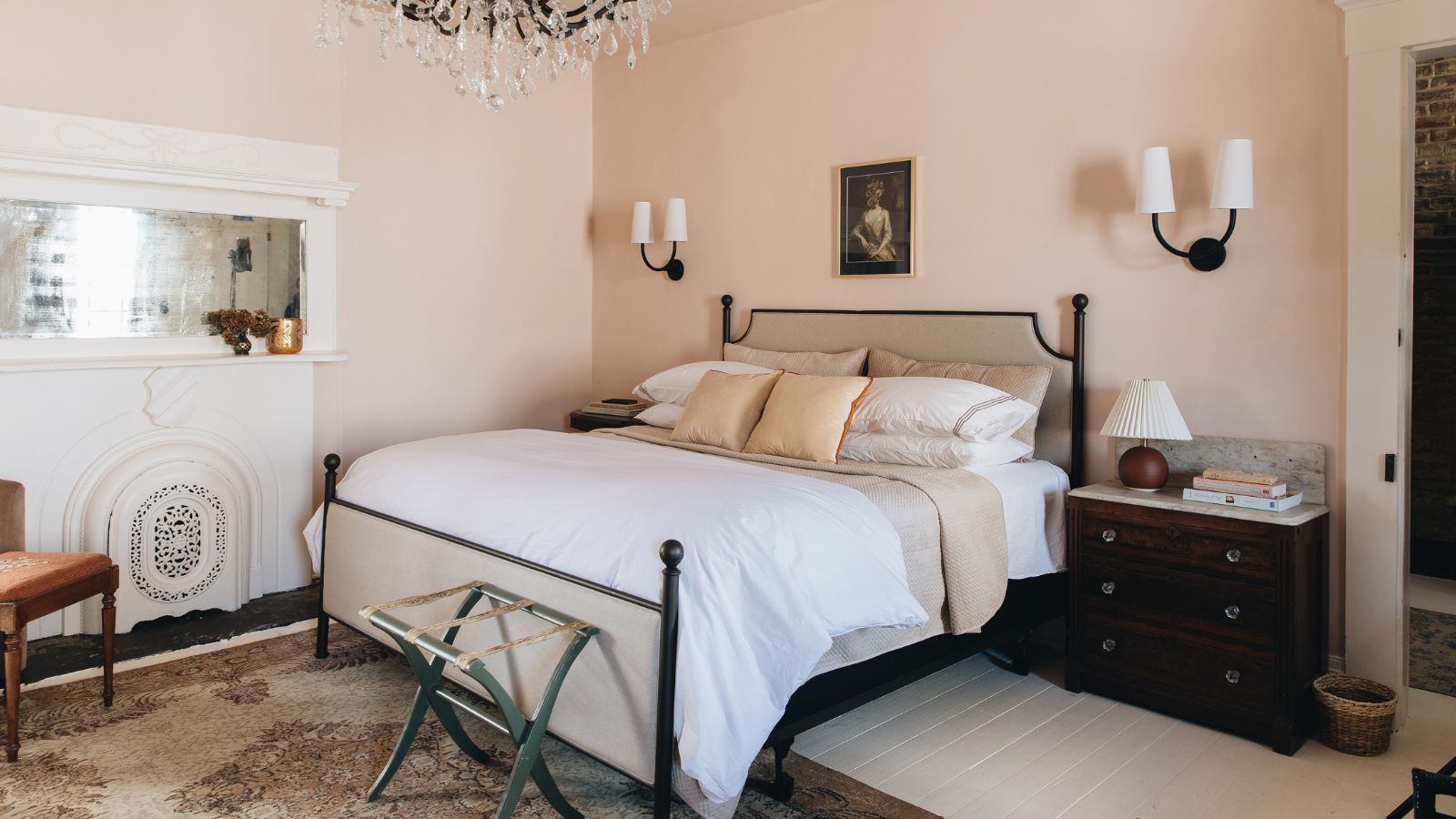 We asked 10 interior designers to share the colors they always tell clients to use in a bedroom – these were the shades that came up top
We asked 10 interior designers to share the colors they always tell clients to use in a bedroom – these were the shades that came up topFrom soothing blues to soft pinks, these are designers' go-to shades for stylish and calming bedrooms
By Emily Moorman